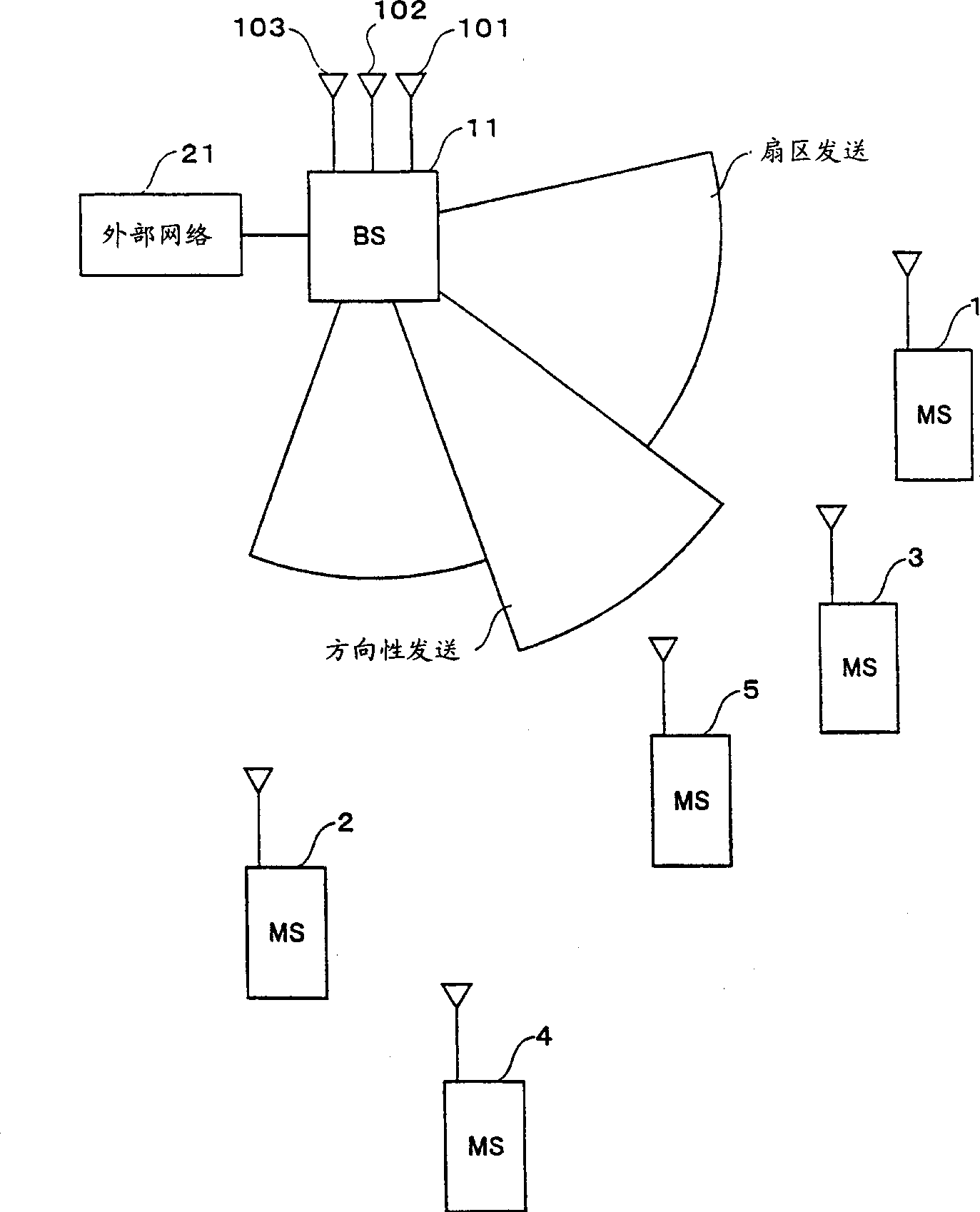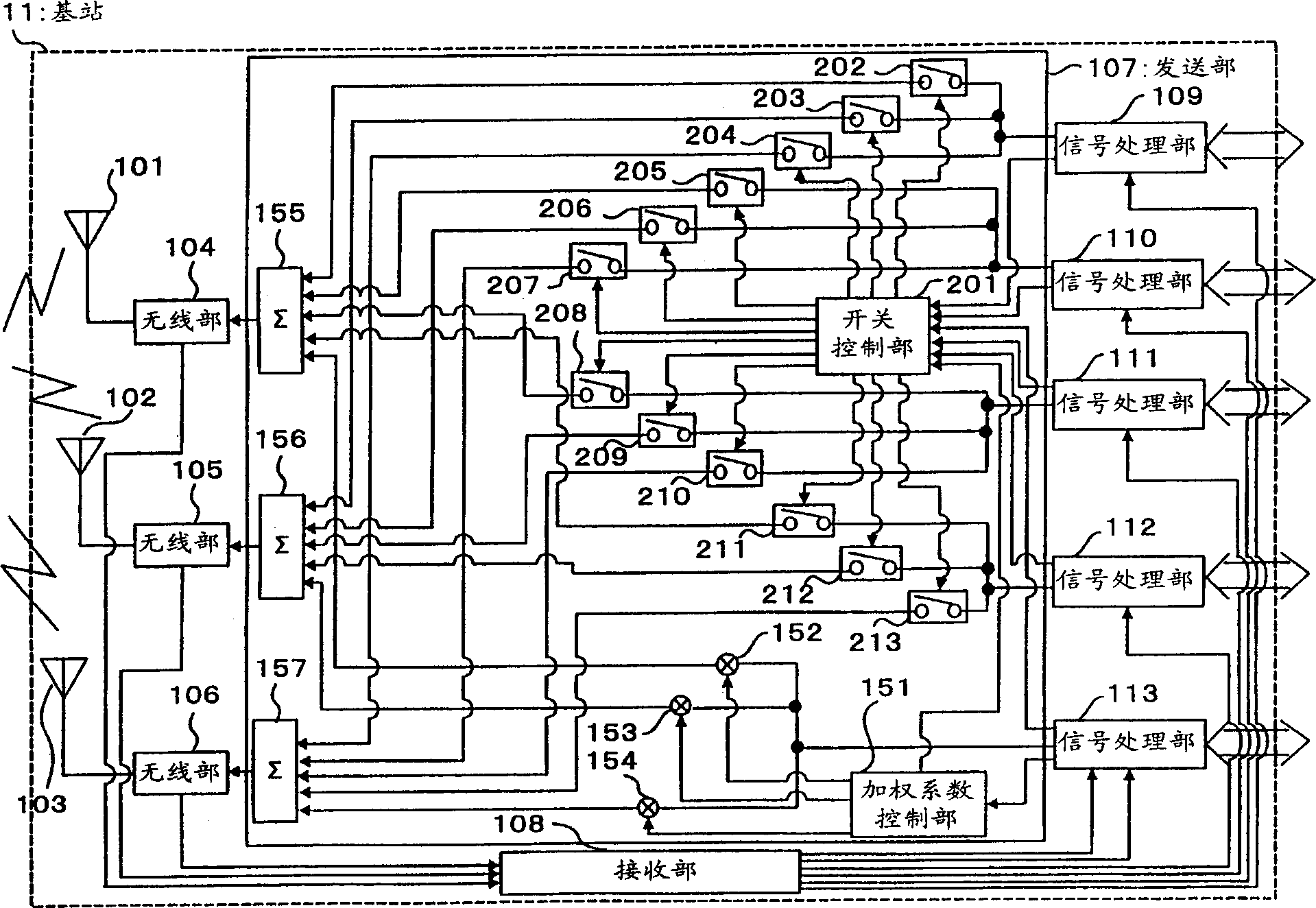Base station device and transmission method
A transmission method and base station technology, which are applied in the direction of selection device, antenna support/installation device, space transmission diversity, etc., and can solve the problems that the wireless part cannot be suppressed from amplifying the dynamic range, the heat generation is large, and the transmission power of the antenna cannot be reduced.
- Summary
- Abstract
- Description
- Claims
- Application Information
AI Technical Summary
Problems solved by technology
Method used
Image
Examples
Embodiment 1
[0021] figure 2 It is a block diagram showing the configuration of the base station apparatus of the first embodiment. figure 2 The shown base station apparatus 11 mainly includes: three antennas 101 , 102 , 103 ; wireless units 104 , 105 , 106 ; transmitting unit 107 ; receiving unit 108 ; The transmission unit 107 has: a weighting factor control unit 151 ; multiplication circuits 152 , 153 , and 154 ; and synthesis circuits 155 , 156 , and 157 .
[0022] Wireless unit 104 converts the high-frequency signal received by antenna 101 into a baseband signal and outputs it to receiving unit 108 , and converts the baseband signal input from synthesis circuit 155 into a high-frequency signal and wirelessly transmits it from antenna 101 . Wireless unit 105 converts a high-frequency signal received by antenna 102 into a baseband signal and outputs it to receiving unit 108 , and converts a baseband signal input from synthesis circuit 156 into a high-frequency signal and wirelessly t...
Embodiment 2
[0043] image 3 It is a block diagram showing the structure of the base station apparatus of the second embodiment. exist image 3 The base station device shown, pair with figure 2 The same parts of the shown base station unit are appended with figure 2 The same reference numerals are used, and descriptions thereof are omitted.
[0044] image 3 The base station unit shown is used in figure 2 A structure in which a switch control unit 201 and connection switches 202 to 213 are added to the base station apparatus.
[0045] The switch control unit 201 controls each connection switch so that the transmission power of each antenna becomes uniform based on the transmission power to each terminal device input from each signal processing unit and the weighting coefficient input from the weighting coefficient 151 . The connection switches 202 to 213 are turned on or off under the control of the switch control unit 201 .
[0046] Hereinafter, as an example, the control of the...
PUM
 Login to View More
Login to View More Abstract
Description
Claims
Application Information
 Login to View More
Login to View More - R&D
- Intellectual Property
- Life Sciences
- Materials
- Tech Scout
- Unparalleled Data Quality
- Higher Quality Content
- 60% Fewer Hallucinations
Browse by: Latest US Patents, China's latest patents, Technical Efficacy Thesaurus, Application Domain, Technology Topic, Popular Technical Reports.
© 2025 PatSnap. All rights reserved.Legal|Privacy policy|Modern Slavery Act Transparency Statement|Sitemap|About US| Contact US: help@patsnap.com



